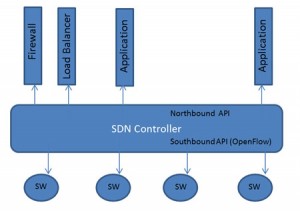SDN: Software Defined Networking

 Software Defined Networking is an approach to networking in which control is decoupled from hardware and given to a software application called a controller allowing the network administrators to support a network fabric across multi-vendor equipment. This is achieved by separating the control plane (software) from the data plane (hardware).
Software Defined Networking is an approach to networking in which control is decoupled from hardware and given to a software application called a controller allowing the network administrators to support a network fabric across multi-vendor equipment. This is achieved by separating the control plane (software) from the data plane (hardware).
The goal of SDN is to allow network engineers and administrators respond quickly to changing business requirements. In a software-defined network, a network administrator can shape traffic from a centralized control console without having to touch individual switches. The administrator can change any network switch's rules when necessary prioritizing or even blocking specific types of packets with a very granular level of control. This is especially helpful in a cloud computing multi-tenant architecture because it allows the administrator to manage traffic loads in a flexible and more efficient manner. Essentially, this allows the administrator to use less expensive, commodity switches and have more control over network traffic flow than ever before.
Limitations of current network technologies
- Complexity: Protocols tend to be defined in isolation, however, each resolving a specific and without the benefit of joint action problems.
- Inconsistent policies: To implement a policy covering the network completely, network administrators must configure thousands of mechanisms and devices.
- Inability to scalability: While the demands of data centers are increasing rapidly, the network should grow in the same way. However, the network becomes more complex with the addition of hundreds of thousands of network devices to be configured and managed.
Besides offering centralized programmable networks that can dynamically meet the needs of businesses, SDN provides the following benefits:
- Reduce of Capex: With the ability to reuse existing hardware, SDN limits the need to invest in new hardware.
- Reduce of Opex: Algorithmic SDN enables network control of network elements such as switches / routers that are increasingly programmable, making it easier to configure and manage, so reduces the time of management.
- Agility and flexibility: SDN enables organizations to deploy applications, services and infrastructures quickly to achieve the goals set by companies in the shortest possible time.